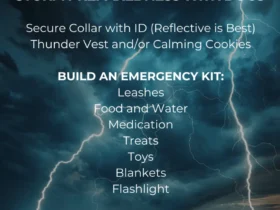
Parvo (canine parvovirus or CPV-2) is a highly contagious illness that is particularly prevalent in puppies and young dogs between six weeks and six months old. While it is typically manifested as a gastrointestinal (GI) illness, it can also manifest with cardiac complications that attack the puppy’s heart muscles, often leading to death. Those who contract parvo are typically unvaccinated or incompletely vaccinated.

Without treatment, parvo is deadly, leading to an unimaginably painful death, comparable to Ebola in humans by some veterinarians. The symptoms of parvovirus include high fever, intractable vomiting, and violent, hemorrhagic diarrhea. However, with early emergency veterinary intervention and intensive care, there is a survival rate of between 65 and 80 percent.
While it’s a devastating and fast-moving virus, parvo is almost always preventable by keeping puppies and dogs up-to-date on their vaccines. Vaccines are crucial in the fight to keep your furry, four-legged friends healthy. If you need help locating low-cost vaccination services in your area, send us a message.
How Do Dogs Get Parvo?
Puppies can be exposed by direct contact with dogs infected with parvo or by sniffing, licking, or consuming infected feces. It can also spread through indirect transfer, such as: when a person who has recently handled a parvo-infected dog touches your puppy or when a puppy comes into contact with a contaminated object like food and water bowls, collars and leashes, or bedding and toys.
Symptoms of Parvo
Puppies who develop intestinal parvo will demonstrate symptoms between three and ten days after being exposed, but most adult dogs won’t exhibit symptoms. The most common parvo symptoms include lethargy, high fever, weakness, loss of appetite, weight loss, dehydration, vomiting, and bloody diarrhea.
If you observe these symptoms, take your dog to the vet immediately. The mortality rate of untreated cases is 90 percent.
What Happens With Parvo?
Intestinal parvo damages the dog’s intestinal lining and causes protein and blood to escape. This can lead to severe complications like sepsis, anemia, the escape of endotoxins into the bloodstream, and a severe drop in white blood cells.
Dog Breeds at Higher Risk of Parvo Complications
Breeds that are more apt to develop parvo complications include American Staffordshire Terriers, Doberman Pinschers, English Springer Spaniels, German Shepherds, Labrador Retrievers, and Rottweilers.
How Is Parvo Diagnosed?
A parvo diagnosis is determined by your veterinarian through observation of symptoms, a physical exam, and blood tests to check for low white blood cell levels. Your vet may also run a fecal CPV ELISA test to determine if virus antigens are present in your dog’s feces.
If your dog is extremely ill, your vet will likely run more tests to determine the extent. An analysis of your dog’s urine may reveal elevated liver enzymes and electrolyte imbalance. An x-ray of your dog’s abdomen may show intestinal damage, obstructions, and dangerous, fluid-filled intestinal segments.
How Is Parvo Treated?
There is no cure for parvo. Your veterinarian will treat the symptoms of the illness. Parvo causes extreme dehydration from diarrhea and vomiting. Your vet will work to replenish your dog’s loss of electrolytes, proteins, and fluids to fight dehydration. Some cases may require fluids via IV. An antidiarrheal medication may also be administered.
Additionally, dogs infected with parvo are at high risk for developing secondary infections since the virus severely weakens the immune system. Your vet may prescribe an antibiotic to combat other bacterial infections.
Most parvo cases require intensive care hospitalization for several days with round-the-clock care. While recovery times vary depending on the severity of the case, recovery generally takes seven to ten days.
How To Prevent Parvo
The first and most important step in preventing parvo is to vaccinate your puppy. While puppies under six weeks of age retain immunity from their vaccinated mother (as long as their mother was vaccinated), it is crucial to vaccinate your puppy at about six, eight, and 12 weeks of age. For ideal protection, your puppy should also get a parvo vaccine dose between 14 and 16 weeks of age. From there, a booster is administered one year later and every three years after that.
Puppies who haven’t received all three parvo vaccinations are very vulnerable to getting the virus. Be extremely careful when socializing your puppy, and avoid dog parks and other public areas while he or she isn’t fully vaccinated. However, it’s okay for your puppy to spend time with fully vaccinated adult dogs in your home.
How To Prevent the Spread of Parvo
Dogs with parvo may remain contagious for up to six weeks after the initial demonstration of symptoms, so it is critically important to isolate an infected dog. Once recovered, dogs are often immune to reinfection, but parvo can survive on areas with infected feces for a minimum of a month indoors and for up to a year outdoors in the right conditions. Be sure to take steps to disinfect areas, including bedding, bowls, toys, crates, collars, leashes, etc., with a 15:1 ratio of water-to-bleach solution. This can also be used to disinfect any outdoor elimination areas.
Protect Your Puppy From Parvo
Parvo is a very serious illness that, if left untreated, leads to an unimaginably painful death for a puppy, but it can be prevented. Be sure to vaccinate your puppy properly and keep him or her up-to-date on all vaccinations.







Find Loves Dogs on Social